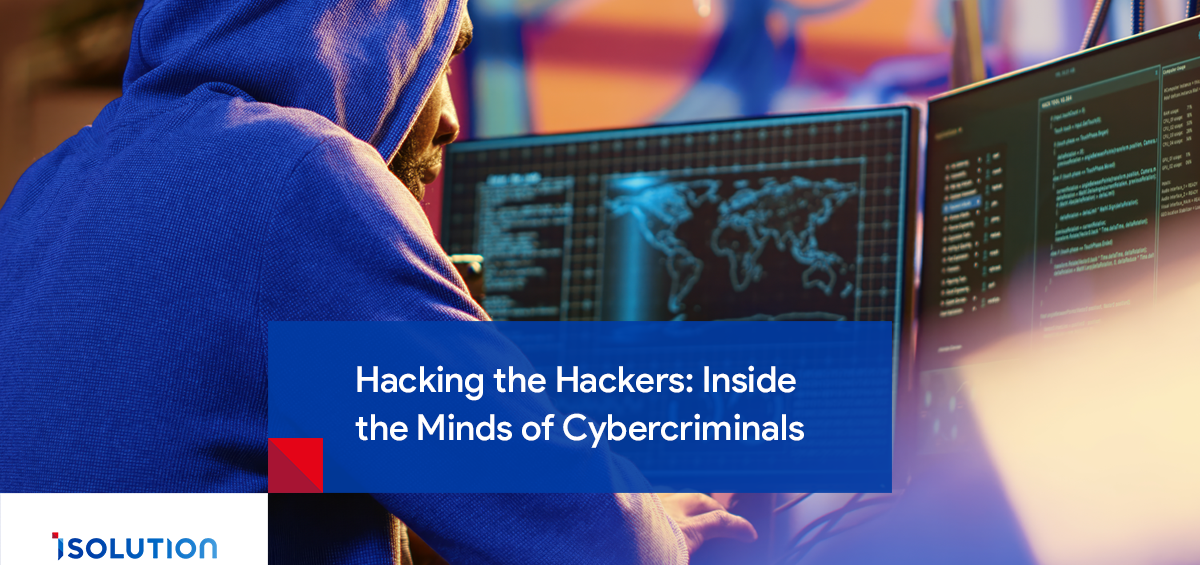Fueled by an excess of motives, whether it’s the attraction of financial gain, ideological enthusiasm, or the sheer adrenaline rush, cybercriminals stand as the foremost adversaries of the 21st century. Posing an ever-looming threat to our digital world. Delving into the psyche of these digital robbers becomes imperative, by understanding their mindset we hope to overcome them.
As the landscape of cyber threats continues to evolve, so does the arsenal of defenses called against them. So, let’s spotlight the strategy of “Hacking the Hackers” as a pivotal tactic in the cybersecurity arsenal. This approach focused on how to face the complicated web of cyber adversaries. That is by employing their own tactics against them. This term sheds light on the multifaceted approach to understanding and neutralizing these shadowy threats. Also, emphasizing the necessity of a proactive stance in safeguarding our digital frontiers.
In this article, we seek to demystify the realm of hacking, peering into the shadows to unveil the essence of these cyber adversaries and fortify our defenses against their severe attacks.
-
Understanding the Cybercriminal Mindset
Cybercriminals don’t have the same mindset, however, they come with varied skills, motivations, and objectives. Some seek financial gain, others aim for ideological victories, and a few are driven by the sheer wish of breaching digital fortresses. Understanding this mindset is crucial. It’s about recognizing the blend of technical skills, psychological manipulation, and opportunistic exploitation that defines their approach to cybercrime.
-
Common Hacking Techniques and Tools
The arsenal of cybercriminals includes an excess of sophisticated tools and techniques designed to exploit the slightest weakness. Phishing, malware, ransomware, SQL injection attacks, and distributed denial-of-service (DDoS) attacks are among the most prevalent methods used to infiltrate systems. These tools are not just advanced but are also becoming more accessible, lowering the entry barrier for aspiring hackers.
-
The Economy of Cybercrime
Cybercrime is a profitable industry, with its economy thriving in the shadows. It’s estimated to cost the global economy a staggering $600 billion annually, a figure that underscores the scale and impact of these activities. This dark economy is fueled by the high demand for personal and financial data, ransom payments, and a marketplace for hacking tools and services.
-
Cybersecurity Measures and Counteractions
In response, cybersecurity professionals employ a set of strategies and technologies to protect against these threats. Firewalls, encryption, anti-malware software, and breaching detection systems form the first line of defense. Organizations are also increasingly adopting proactive measures, such as penetration testing, cybersecurity audits, and employee training on cybersecurity best practices to identify and fix vulnerabilities before they can be exploited.
-
The Legal and Ethical Framework
Cybercrime is a global phenomenon that transcends borders, making international cooperation and harmonized legal frameworks essential. Laws and regulations governing cybersecurity, data protection, and the prosecution of cybercriminals must evolve to keep pace with the ever-changing threat landscape. However, this must be balanced against concerns over privacy and civil liberties, as overly intrusive surveillance measures can affect fundamental rights.
-
Emerging Trends in Cybercrime
As technology advances, so do the tactics and sophistication of cybercriminals. The rise of cryptocurrencies has opened new avenues for cybercrime, facilitating anonymous transactions and money laundering. The Internet of Things (IoT) expands the attack surface for cybercriminals. While artificial intelligence and machine learning present new opportunities for both offensive and defensive cyber operations. Staying ahead of these trends is imperative for cybersecurity professionals.
-
The Role of Education and Awareness
Ultimately, education and awareness is one of the most effective tools in the fight against cybercrime. Empowering individuals and organizations with the knowledge to recognize and respond to cyber threats is critical. Also, cybersecurity training programs, public awareness campaigns, and educational resources play a vital role in building a culture of cyberresilience.
In conclusion, understanding the mindset and tactics of cybercriminals is a critical step in defending against their activities. Thus, by staying alert, fostering international cooperation, and promoting cybersecurity education and awareness, we can collectively build a more secure digital world.







Leave a Comment